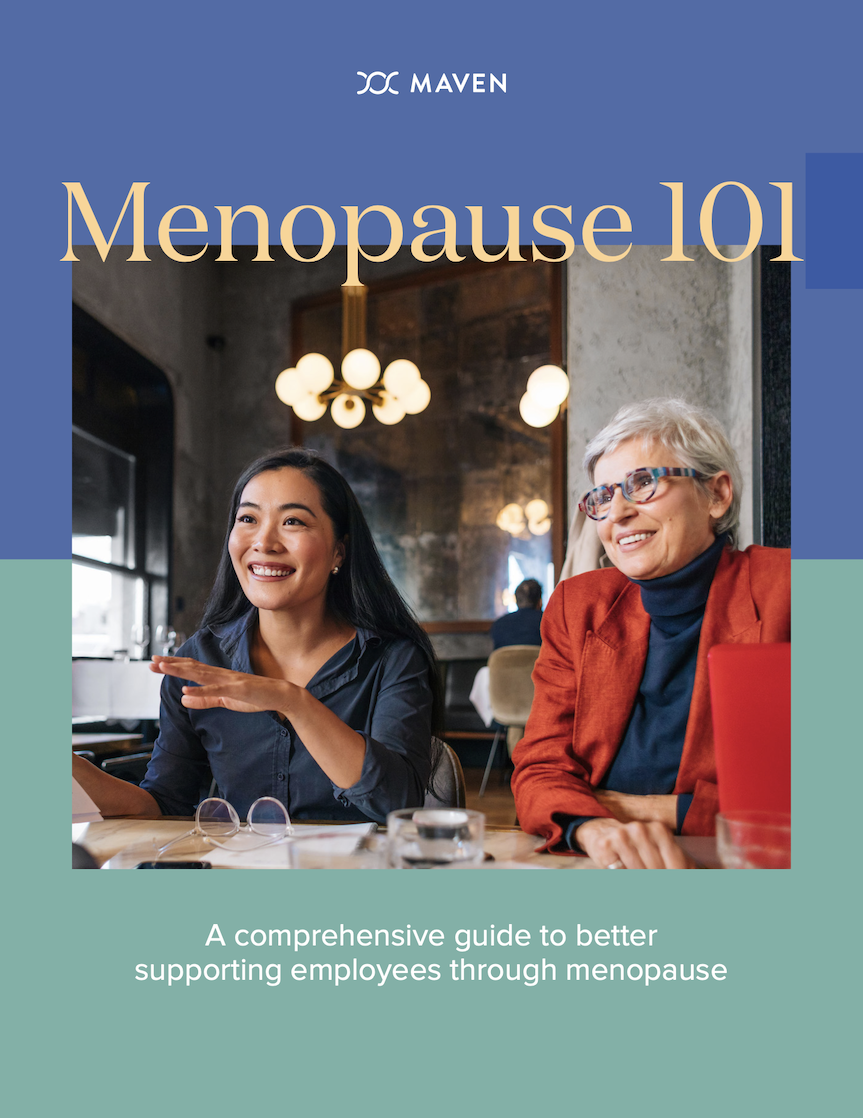The Hidden Costs of Menopause: How It Affects Workers–and What Employers Can Do to Help


During the Great Resignation, organizations all over the world decried the loss of talent and expertise, as well as the difficulty and cost of replacing it. But another great resignation has been happening all along: Every year, 20% of women going through perimenopause or menopause (a period that extends from their 30s through their 50s or 60s) leave the workforce, costing businesses around the world hundreds of billions of dollars in lost knowledge and replacement costs.
About 20% of the workforce is going through perimenopause or menopause at any given time. By the end of the decade, the estimated cost of menopause to businesses in lost productivity will be $150 billion annually. Maven Clinic, a comprehensive health platform serving women and families, found that there could be an extra $2,100 in healthcare costs annually for those transitioning through menopause, including $400 in pharmaceutical costs.
For an organization, the economic toll comes from loss of workforce expertise and leadership. It can cost up to twice the salary of a lost employee to replace them. There is loss of diversity, lower productivity — Maven says up to 14 days of missed work — and increased turnover.
How do employers address this? Here are 4 steps to demystify menopause and insulate your people and organization from its impacts, drawing on a report from Maven on the hidden costs of menopause:
Know what it is: Menopause is defined as the cessation of menstruation for 12 months, but the impact can begin years prior as perimenopause, when hormones begin to fluctuate, and last years past its onset. That means some women will experience symptoms from their mid- to late-30s through their 60s, when they are in the prime of their work life.
Know the impacts: There are dozens of symptoms associated with menopause. The most common are hot flashes and night sweats (known medically as vasomotor symptoms); sleep disturbance, brain fog and memory lapses; mood disorders like depression and anxiety; vaginal dryness and changes in libido; headaches and nerve disorders like tingling extremities; digestive disorders and changes in taste; joint and muscle pain; and dizzy spells.
While the symptoms themselves are troubling, the changes in hormones also lead to medical issues, including increases in LDL cholesterol (the bad one), increased risks of osteoporosis, and increased risk of cardiovascular events.

Stress can make all of these symptoms worse, and a recent study found that 6.7% of women reported an increase in symptoms during the pandemic.
Know how to help: Education is key, not just for women experiencing menopause, but for their colleagues and managers as well. Only a third of people going through menopause feel supported by their managers, many of whom know nothing about menopause, its symptoms, or their impact on work.
Make simple environmental changes. Access to fans, desks away from sunny windows or heater vents, and access to a cool relaxation room can help with vasomotor symptoms. Flexible work arrangements – hybrid or full-time remote work, or flexibility to start earlier or later – can help with issues related to sleep disturbances.
Wellness programs can help everyone, but those going through menopause can benefit from reflexology, yoga, walking programs, or aromatherapy. Those modes were found in a recent review study to improve insomnia significantly. Stretching and exercise also improved quality of sleep. Evidence was inconsistent related to depression symptoms, but it could help.
Provide access to expertise: Most gynecologists report being “barely comfortable” helping patients through this time – or even talking about it to them. Only a fifth of residency programs feature any instruction on menopause. The lack of education leads to women being told to get a hobby, see a psychologist, or wear layers. Health-insurance plans often don’t fully support the specialized help that a woman needs to get through this time.
Maven has a network of menopause specialists that are available 24/7 to help patients manage their symptoms, through coaching or second opinions. They also facilitate setting up support groups – something that 2/3 of respondents to a Maven survey said helped them manage symptoms.
Will all of this help? There is limited data on the return on investment for menopause-support benefits, but what is there seems to underline the benefits. A review study released in June found that cognitive behavioral therapy, yoga, exercise programs, and menopause education improved symptoms significantly. The first of those showed a special benefit in presenteeism. Awareness programs significantly improved knowledge and attitudes throughout organizations. The study authors noted that there have been some small studies on limited populations that showed improved work outcomes related to implementing menopause support programs.
The population is aging, and it is already difficult to find and retain experienced talent. Creating a menopause program or benefit can help organizations avoid turnover, improve engagement and productivity, and make the workplace better for everyone.
Editor's Note: From Day One thanks our partner, Maven Clinic, for supporting this sponsor spotlight.
Lisa Jaffe is a freelance writer who lives in Seattle with her son and a very needy rescue dog named Ellie Bee. She enjoys reading, long walks on the beach, and trying to get better at ceramics.
The From Day One Newsletter is a monthly roundup of articles, features, and editorials on innovative ways for companies to forge stronger relationships with their employees, customers, and communities.